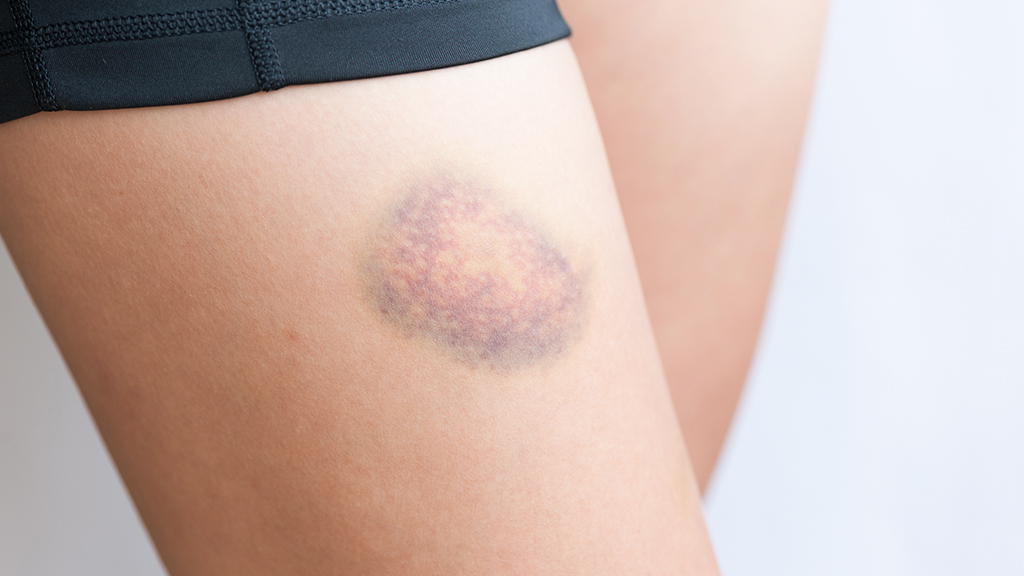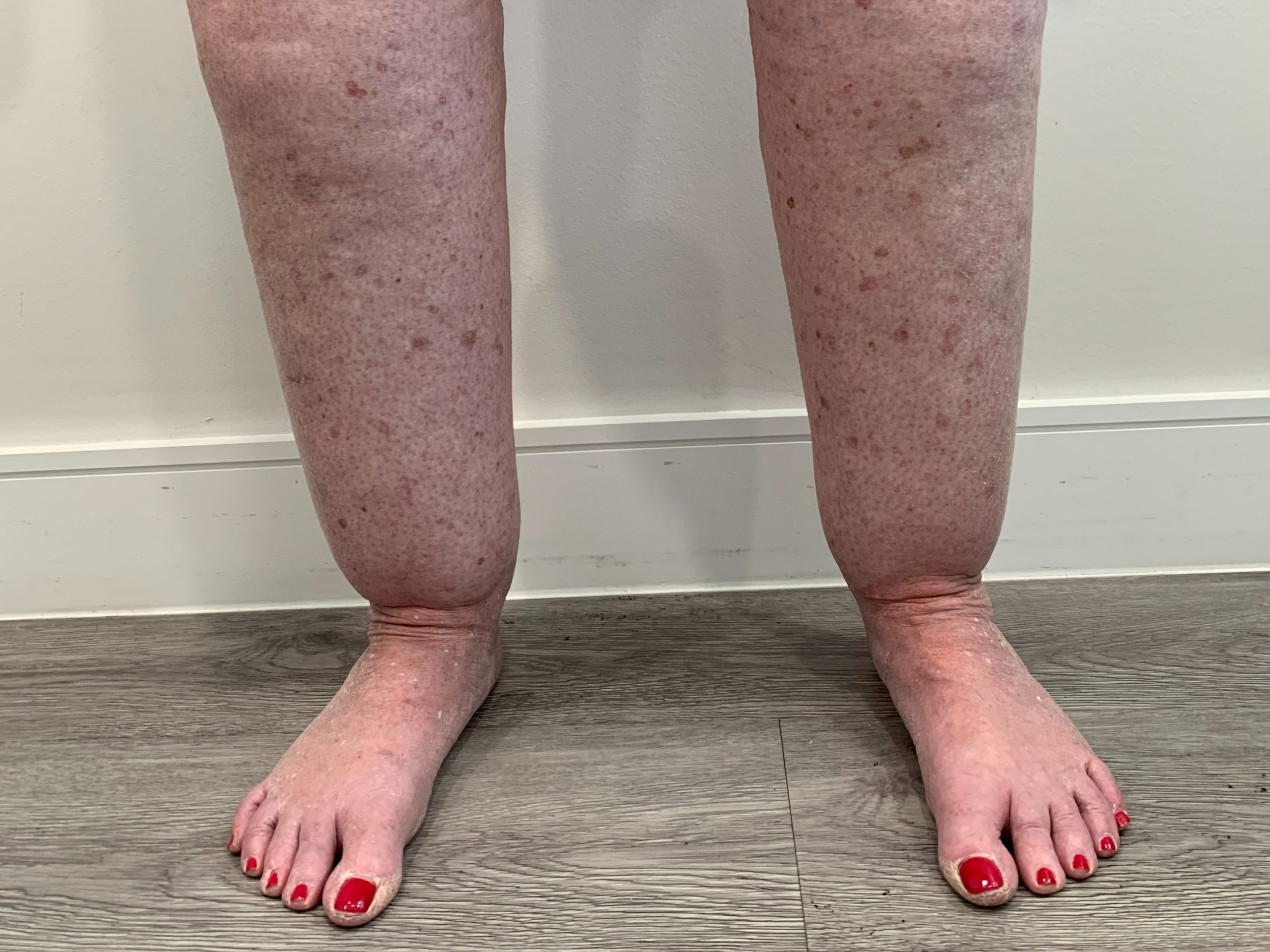Lipedema is one of the most misunderstood conditions affecting women today — but unfortunately, many of its early signs are dismissed as simple weight gain or a ‘disproportionate body’.
When I first started noticing changes in my legs, I had no idea what was happening. My ankles and calves had no shape. They felt heavy. I bruised constantly. Clothes stopped fitting properly — but only from the waist down (especially in Zara, if you know you know!). Sound familiar?
If you’ve ever had that gut feeling that something isn’t right with your body, this blog post is for you.
The Most Common Symptoms of Lipedema
Lipedema symptoms can vary from person to person, but most women with the condition share a few clear similarities.
Here are the hallmark signs to look for:
Symmetrical Fat Buildup in the Lower Body
Lipedema fat usually builds up symmetrically – meaning in both legs, thighs and sometimes arms – while the upper body remains noticeably smaller. This causes a pear-shaped or column-like body appearance.
Painful, Tender Fat
Unlike normal fat, Lipedema tissue is often painful to touch. It can feel lumpy, heavy, and tender – especially at the end of the day or during your menstrual cycle.
Easy Bruising
One of the more surprising symptoms: you may bruise very easily – known as ‘Lipedema bruising‘ – on your legs, hips, or arms – even from mild contact. This is due to fragile blood vessels under the surface of the skin.
Swelling That Worsens as the Day Goes On
While Lipedema isn’t fluid retention like Lymphedema, many women notice daily swelling that increases with standing, walking, or in hot weather, but it improves overnight.
Disproportionate Body Shape
This is one of the earliest signs – you start noticing that no matter how much you diet or carry out gentle exercise for Lipedema, your legs won’t shrink – while your upper body probably loses weight easily.
Cuffing at the Ankles or Wrists
Lipedema fat stops abruptly at the ankles (or wrists), creating a “cuff” like appearance, sparing the hands and feet. This is a key symptom that distinguishes Lipedema from other conditions like Lymphedema.
Resistance to Diet and Exercise
Many women spend years trying to ‘fix’ their body with every diet under the sun – but Lipedema fat doesn’t respond to traditional weight loss methods. This leads to frustration, guilt, and feeling like you’re doing something wrong ( when you’re not!).
What Does Lipedema Feel Like?
Beyond what you see, Lipedema is something you feel in your body every day.
Women with Lipedema often describe it as:
- A feeling of heaviness or dragging in the legs
- Aching or burning Lipedema pain, especially in the calves and thighs
- Tightness or pressure, particularly after standing for long periods
- Fatigue and discomfort even after short walks
Don’t let anyone tell you it’s ‘just fat’. It’s pain, pressure, and emotional exhaustion with Lipedema from not being believed.
Where Does Lipedema Usually Start?
For most people, Lipedema begins in the upper legs and hips – then gradually progresses down to the knees, calves, and ankles. Lipedema often affects the arms as well, especially in the latter stages.
My Lipedema progression was quite unusual, it started in my ankles and calves as a teenager, then as time went on it made its way up to my knees. They became my worst affected area by far. My thighs and arms also have Lipedema fat in them, but not to the extent of my lower legs. This shows how it manifests differently for everyone.
Lipedema often appears or worsens during hormonal shifts, such as:
- Puberty
- Pregnancy
- Menopause
- Starting or stopping hormonal contraception
When to Get Checked
If any of this sounds familiar, it’s worth getting assessed by a Lymphedema nurse or vascular specialist who understands the complexities of Lipedema. Many GPs still aren’t trained to recognise it – so come prepared with research, photos, and your full symptom history.
Not sure where to start? Check our Find a Lipedema Specialist directory for professionals around the world who are trained in Lipedema diagnosis and care.
Why Early Diagnosis Makes a Big Difference
Lipedema is progressive, which means it can worsen over time if not managed properly. Early diagnosis gives you access to:
- Lipedema compression garments
- Massage for Lipedema (MLD)
- Lipedema workout strategies that don’t cause flare-ups
- Anti-inflammatory diet for Lipedema
- Emotional support and community connection
Know the Symptoms of Lipedema, Trust Your Instincts
If you’re asking yourself, “Could this be Lipedema?” – that’s reason enough to start exploring it further. You know your body better than anyone. And if your symptoms match the list above, you’re not imagining things.
You’re not lazy. Your body isn’t broken. You might just be living with a condition that’s been ignored for far too long – and now, you’re ready to do something about it. And remember, you’re not alone on this journey.
Disclaimer: My blogs talk about Lipedema, diet, surgery and much more. I’m talking from my point of view to help women, and remind them they are not alone. I am not a medical professional, so the content above is from my own perspective with research I have done into the topic. It’s not meant as medical advice, you should always consult your doctor or a specialist for both your diagnosis, and a treatment plan.



